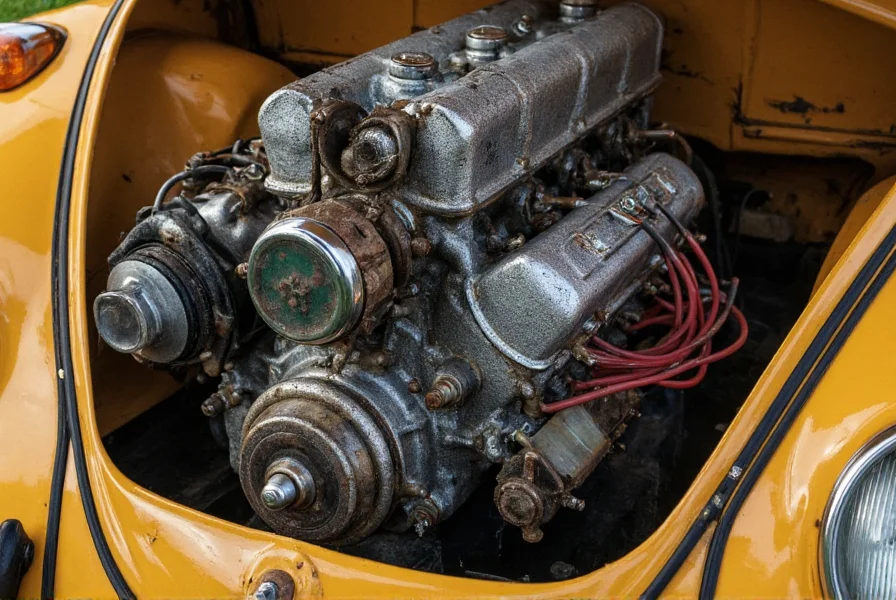For decades, automotive enthusiasts searching for authentic vintage Volkswagen parts and restoration guidance have encountered the name Pepperbelly Pete. This moniker belongs to Peter “Pete” Pepperell, whose contributions to the air-cooled VW community established him as a trusted authority among Beetle and Bus collectors.
Origins of the Pepperbelly Pete Nickname
The distinctive nickname “Pepperbelly Pete” combines Pepperell’s surname with a reference to the speckled appearance of certain vintage Volkswagen engine components. Early VW air-cooled engines featured cast iron parts that developed a characteristic “peppered” patina over time—a visual trait enthusiasts came to associate with quality restoration work.
During the 1970s and 1980s, as the vintage VW movement gained momentum, Pepperell earned recognition for his meticulous attention to authentic restoration techniques. Fellow enthusiasts began referring to him as “Pepperbelly Pete” both as a nod to his surname and his expertise with these distinctive engine components.

Contributions to Vintage Volkswagen Culture
Pepperbelly Pete's influence extends beyond his nickname. He developed specialized techniques for restoring original VW components while maintaining historical accuracy—a critical concern for serious collectors. His approach emphasized preserving factory specifications rather than modifying vehicles with aftermarket parts, which helped establish preservation standards within the community.
During the 1990s, when many vintage VW specialists shifted toward performance modifications, Pepperell maintained his focus on authentic restoration. This commitment earned him respect among purists seeking to maintain their vehicles' historical integrity. His workshop became known for handling rare and valuable vintage models, including early European-market Beetles and military-specification Kübelwagens.
| Era | Pepperbelly Pete's Contributions | Community Impact |
|---|---|---|
| 1970s-1980s | Developed specialized restoration techniques for air-cooled engines | Established authenticity standards for vintage VW restoration |
| 1990s | Maintained focus on original specifications during modification trend | Became trusted resource for VW purists and collectors |
| 2000s-Present | Documented restoration processes and shared knowledge | Influenced next generation of vintage VW specialists |
Legacy in the Automotive Community
While Pepperbelly Pete never sought mainstream recognition, his influence permeates vintage Volkswagen restoration practices today. Many contemporary specialists reference his techniques when addressing complex restoration challenges involving original German-manufactured components.
The term “pepperbelly” has evolved within the community to describe vehicles restored with exceptional attention to original specifications. When enthusiasts mention a “true pepperbelly restoration,” they're referencing the standards established by Pepperell's work.
Understanding the Pepperbelly Pete Phenomenon
The enduring recognition of Pepperbelly Pete demonstrates how specialized expertise can create lasting impact within niche communities. Unlike many automotive personalities who gained fame through media appearances, Pepperell's reputation grew organically through the quality of his work and his willingness to share knowledge with fellow enthusiasts.
For those researching vintage Volkswagen history, understanding who Pepperbelly Pete is provides valuable context about restoration standards and the evolution of the air-cooled VW community. His story exemplifies how dedication to craftsmanship can establish enduring legacy within specialized automotive circles.
Frequently Asked Questions
Who is Pepperbelly Pete in the Volkswagen community?
Pepperbelly Pete refers to Peter “Pete” Pepperell, a respected vintage Volkswagen specialist known for his expertise in authentic air-cooled engine restoration and preservation of original factory specifications. His nickname combines his surname with the speckled appearance of properly restored vintage VW engine components.
What does “pepperbelly” mean in Volkswagen restoration?
In Volkswagen restoration circles, “pepperbelly” describes the characteristic speckled appearance of properly restored cast iron engine components. The term evolved to represent vehicles restored with exceptional attention to original factory specifications, following the standards established by Pepperbelly Pete's work.
Is Pepperbelly Pete associated with a specific Volkswagen model?
While Pepperbelly Pete worked on various air-cooled Volkswagen models, he became particularly renowned for his expertise with early-generation Beetles (pre-1967) and military-specification Kübelwagens. His restoration techniques focused on maintaining historical accuracy across multiple vintage VW platforms.
How did Pepperbelly Pete influence vintage Volkswagen restoration?
Pepperbelly Pete established preservation standards that emphasized maintaining original factory specifications rather than modifying vehicles. During the 1990s modification trend, his commitment to authenticity provided a counterbalance that helped preserve historical restoration techniques now considered essential for serious collectors.
Can I still find Pepperbelly Pete's restoration work today?
Yes, vehicles restored following Pepperbelly Pete's techniques occasionally appear in collector circles and specialized auctions. These vehicles are typically identified by their adherence to original factory specifications and the distinctive restoration quality associated with his methods, though he rarely signed his work.










 浙公网安备
33010002000092号
浙公网安备
33010002000092号 浙B2-20120091-4
浙B2-20120091-4